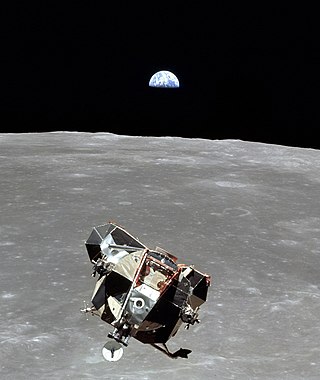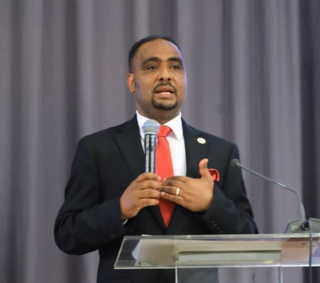
Technology is the application of conceptual knowledge for achieving practical goals, especially in a reproducible way. The word technology can also mean the products resulting from such efforts, including both tangible tools such as utensils or machines, and intangible ones such as software. Technology plays a critical role in science, engineering, and everyday life.

Science and technology in the United States has a long history, producing many important figures and developments in the field. The United States of America came into being around the Age of Enlightenment, an era in Western philosophy in which writers and thinkers, rejecting the perceived superstitions of the past, instead chose to emphasize the intellectual, scientific and cultural life, centered upon the 18th century, in which reason was advocated as the primary source for legitimacy and authority. Enlightenment philosophers envisioned a "republic of science," where ideas would be exchanged freely and useful knowledge would improve the lot of all citizens.
A management information system (MIS) is an information system used for decision-making, and for the coordination, control, analysis, and visualization of information in an organization. The study of the management information systems involves people, processes and technology in an organizational context.
Technology transfer (TT), also called transfer of technology (TOT), is the process of transferring (disseminating) technology from the person or organization that owns or holds it to another person or organization, in an attempt to transform inventions and scientific outcomes into new products and services that benefit society. Technology transfer is closely related to knowledge transfer.

Health informatics is the study and implementation of computer structures and algorithms to improve communication, understanding, and management of medical information. It can be view as branch of engineering and applied science.
Science and technology in Israel is one of the country's most developed sectors. Israel spent 4.3% of its gross domestic product (GDP) on civil research and development in 2015, the highest ratio in the world. In 2019, Israel was ranked the world's fifth most innovative country by the Bloomberg Innovation Index. It ranks thirteenth in the world for scientific output as measured by the number of scientific publications per million citizens. In 2014, Israel's share of scientific articles published worldwide (0.9%) was nine times higher than its share of the global population (0.1%).

Addis Ababa University (AAU) is a national university located in Addis Ababa, Ethiopia. It is the oldest university in Ethiopia. AAU has thirteen campuses. Twelve of these are situated in Addis Ababa, and one is located in Bishoftu, about 45 kilometres (28 mi) away. AAU has several associated research institutions including the Institute of Ethiopian Studies. The Ministry of Education admits qualified students to AAU based on their score on the Ethiopian University Entrance Examination (EUEE).

The China Geological Survey (CGS) (Chinese: 中国地质调查局) is a government-owned, not-for-profit, Chinese organization researching China's mineral resources. It is a public institution managed by the State Council's ministries and commissions responsible for geological and mineral exploration under the State Council of the People's Republic of China. According to the national land and resources survey plan, it is now managed by the Ministry of Natural Resources. It is the largest Geoscience agency in China since being reinstated in 1999, and the headquarter is in Beijing, the capital of China.

Emerging technologies are technologies whose development, practical applications, or both are still largely unrealized. These technologies are generally new but also include older technologies finding new applications. Emerging technologies are often perceived as capable of changing the status quo.
The following outline is provided as an overview of and topical guide to technology:

Science and technology in Portugal is mainly conducted within a network of research and development (R&D) units belonging to public universities and state-managed autonomous research institutions. There are also non-state-run research institutions and some private R&D projects developed by companies.

Science and technology in Italy has a long presence, from the Roman era and the Renaissance. Through the centuries, Italy has advanced the scientific community which produced many significant inventions and discoveries in biology, physics, chemistry, mathematics, astronomy, and the other sciences. In 2019, Italy was the 6th world producer of scientific articles publishing more than 155,000 documents. From 1996 to 2000, it published a total of 2 million scientific articles. Italy was ranked 28th in the Global Innovation Index in 2022.
Scientific research in Sri Lanka is carried out by several research institutions, however, historically Sri Lanka has been behind its regional peers in research funding. Sri Lanka was ranked 95th in the Global Innovation Index in 2021.

The Science and Technology Information Center (STIC) is an Ethiopian organisation which provides information to support scientific and technological (S&T) activities in the country. STIC has published information on the financing of research and development and on the nature and progress of innovative projects, and in 2014 was planning to introduce bibliometric monitoring of publications in S&T. The center has also provided information and communications technology facilities including a digital library, a patent information system, an automated personnel management system, and a S&T-related database.

The Ministry of Innovation and Technology (MinT) is an Ethiopian government department responsible for science and technological development in Ethiopia as well as a governing body of communications. It was established as a commission in December 1975 by directive No.62/1975. The current minister is Belete Molla since 2021.
Science and Technology in Chile is led by the National Commission of Scientific and Technological Investigation.

The Council of Ministers of Abiy Ahmed is the cabinet of the government of Ethiopia during the premiership of Abiy Ahmed since early 2018.

Shumete Gizaw is an Ethiopian politician, researcher and educator who was served as the Director General of the Information Network Security Agency from 2020 to 2022. Previously, he has been the former Chief of Staff of Prime Minister Abiy Ahmed, and the former State Minister of Science and Technology.
Robotics is a recent developing technology in Ethiopia and many high tech enterprises are emerging in Ethiopia, implementing artificial intelligence to erase manufacturing jobs.

The Ethiopia Museum of Art and Science Science is a 15,000 m2 (160,000 sq ft) lying science museum in Addis Ababa, Ethiopia. It was inaugurated by Prime Minister Abiy Ahmed along with other high-ranking officials on 4 October 2022. Part of Chinese aided Addis Ababa Riverside Development Project Phase II, the museum contains exhibition hall dedicated to scientific and developmental research. The museum lies on 6.78 hectares with 9-metre (30 ft) circular shape dubbed "ring of wisdom" to denote "human ability and skillfulness to create objects". In addition, the second room is dedicated to a three-dimensional theatre movie called Dome Theatre. The museum also contains several building complexes and interactive display screens, cybersecurity, finance, geographical information system (GIS), service industries, data analysis, manufacturing, and robotics.















